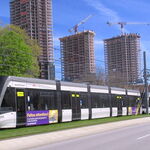Monarch Butterfly
Superstar
There still is a Labrador-Quebec border dispute. See link.

Line A: the boundary decided by the Privy Council; the current legal boundary. Line B: the boundary as it is sometimes portrayed by Quebec today.

Line A: the boundary decided by the Privy Council; the current legal boundary. Line B: the boundary as it is sometimes portrayed by Quebec today.
The border between Labrador and Canada was set March 2, 1927, after a tortuous five-year trial. In 1809 Labrador had been transferred from Lower Canada to Newfoundland, but the landward boundary of Labrador had never been precisely stated. Newfoundland argued it extended to the height of land, but Canada, stressing the historical use of the term "Coasts of Labrador", argued the boundary was 1 statute mile (1.6 km) inland from the high-tide mark. As Canada and Newfoundland were separate Dominions, but both members of the British Empire, the matter was referred to the Judicial Committee of the Privy Council(in London), which set the Labrador boundary mostly along the coastal watershed, with part being defined by the 52nd parallel north. One of Newfoundland's conditions for joining Confederation in 1949 was that this boundary be entrenched in the Canadian constitution. While this border has not been formally accepted by the Quebec government, the Henri Dorion Commission (Commission d'étude sur l'intégrité du territoire du Québec) concluded in the early 1970s that Quebec no longer has a legal claim to Labrador.
Prior to the 1995 Quebec sovereignty referendum, Parti Québécois Premier Jacques Parizeau indicated that in the event of a "yes" vote, a sovereign Quebec under his leadership would have recognised the 1927 border. However, in 2001, Québec Natural Resources Minister and Québec Intergovernmental Affairs Minister reasserted that Québec has never recognised the 1927 border:"Les ministres rappellent qu'aucun gouvernement québécois n'a reconnu formellement le tracé de la frontière entre le Québec et Terre-Neuve dans la péninsule du Labrador selon l'avis rendu par le comité judiciaire du Conseil privé de Londres en 1927. Pour le Québec, cette frontière n'a donc jamais été définitivement arrêtée."
(The ministers reiterate that no Quebec government has ever formally recognized the drawing of the border between Quebec and Newfoundland in the Labrador peninsula according to the opinion rendered by the privy council in 1927. For Quebec, this border has thus never been definitively defined.)




